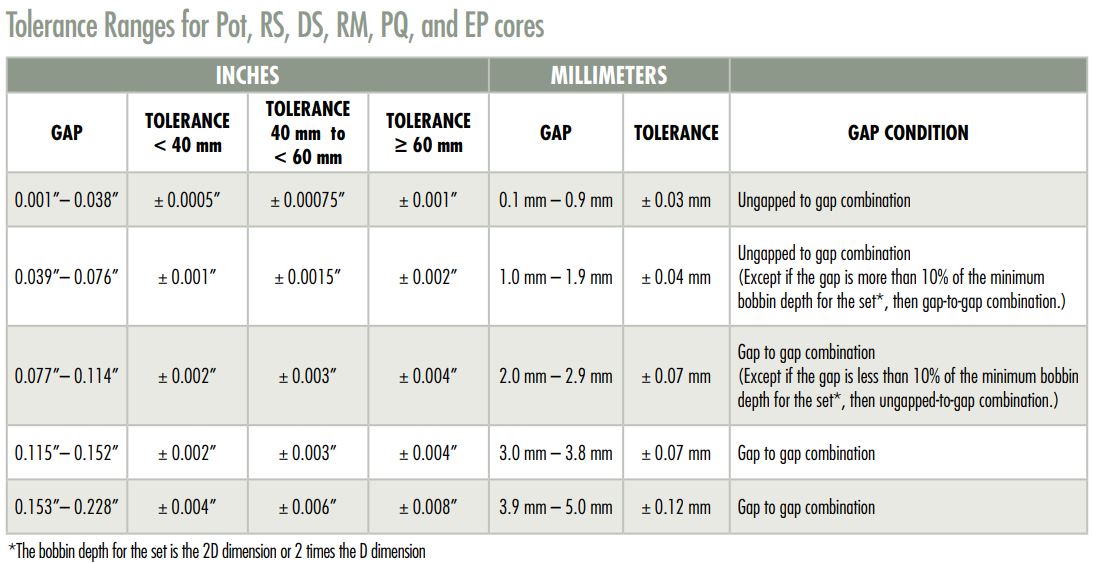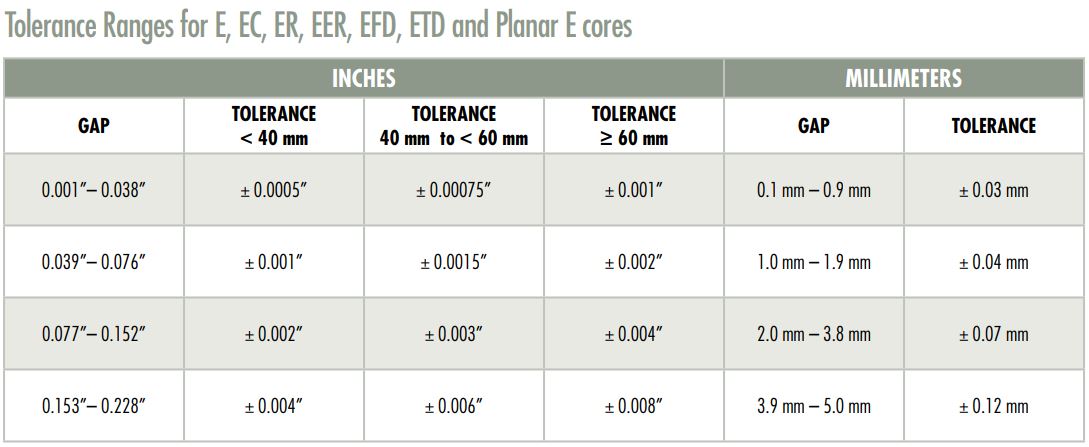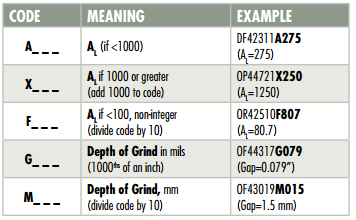Gapped Cores
Magnetics ferrite cores can be ordered with an air gap to alter the properties of the core. Ferrite cores can be gapped to a desired ALvalue or to a specific depth of grind to meet the customer’s specifications. This page describes the two methods used to gap ferrite cores, provides the tolerances Magnetics can achieve for each method, and shows how to order a gapped ferrite core based on the type and amount of gap required.
Gapping for AL
In most applications, defining the gap with the AL results in inductors with the least variation. Electrical measurement is inherently more precise, and compensation is made for variability in material permeability and core geometry.
When specifying and ordering E cores (including EC, EFD, EER, ETD, and Planar E cores) gapped to an AL, it is important to note which cores are produced in gap-to-gap combination, because two gapped pieces are assembled to achieve the AL. Alternatively, for E cores provided ungapped-togap, an ungapped piece must be used with a gapped part to achieve the AL. Pot Cores (including Pot, RS, DS, RM, PQ, and EP cores) are sold as sets whether the combination is gap-to-gap or ungapped-to-gap.
AL testing and limits are calculated to three significant digits, based on the normal value. For example, AL=99±3% is interpreted as 96.0 Minimum, 99.0 Nominal, and 102.0 Maximum.
Magnetics tests gapped AL values with full bobbins, usually 100 turns, or 250 turns for deep gaps. The drive level is low (5 Gauss) and the frequency is set low enough to avoid resonance effects. Measured inductance in an application may vary significantly from the theoretical value due to low turns, low bobbin fill, leakage effects, resonance effects, or elevated drive levels.
It is important for the users to verify the correlation between the test of the core and the specific test being applied to the inductor or transformer. Planar E cores, Planar RM, and Planar PQ cores are especially susceptible to correlation discrepancies.
AL Value Tolerences
Gap-to-gap combination means the gap is symmetrical. Half of the total gap is removed from each piece. Ungapped-to-gap combination means an asymmetrical gap; the entire gap is taken from one piece, and the other piece is ungapped.


*Chart shows type of combination and the guaranteed tolerance for corresponding AL ranges. Ranges indicated are the tolerances for standard gaps. For ±5%, ±7%, and ±10%, the maximum AL for each is shown. Standard cores are manufactured to the smallest allowed tolerances. EE and EI tolerances are identical.
Gapping for Depth of Grind
For parts ordered in pieces (E and I cores). The depth of grind is given for each piece.
For parts orders in sets, the depth of grind is given as a total for the set, and may be ungapped-to-gap core pieces, or gap-to-gap. To make an ungapped-to-gap set, use one piece of each. For example, use 0R41808G050 with 0R41808EC for an asymmetrical gap of 0.050”± 0.001”. For the same gap, but symmetric, use two pieces of 0R41808G025.
For deep gaps, however, better consistency often results when the depth of grind is specified. In such cases, variation in the finished inductor is dominated by the variation in the windings, especially if the number of turns is low.


How To Order Magnetics Gapped Ferrite Cores
Magnetics Gapped Ferrite Part Number Example

Gap Code
The letter indicates the type of gap and a three-digit number defines the value.

AL is inductance factor, mH/1000 Turns, or nH/T².
Either the AL or the depth of grind (not both) is controlled during production of gapped cores.